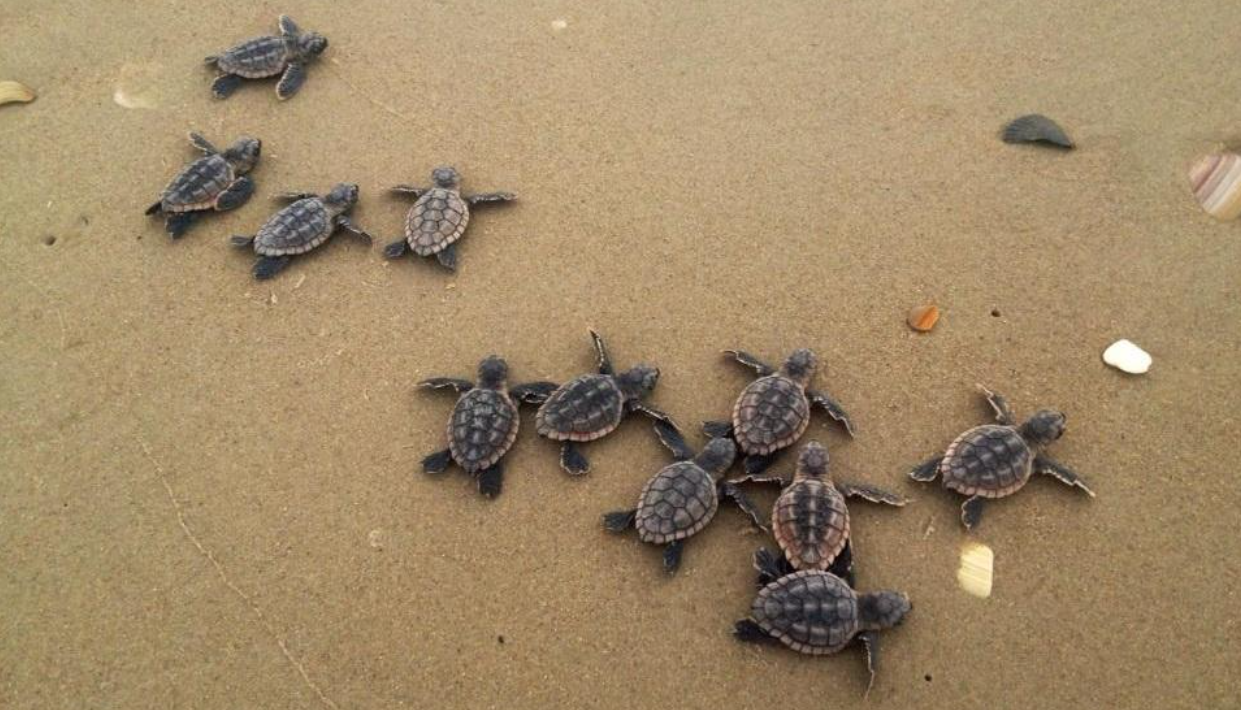Between August and October a remarkable surge in sea turtle nestings shattered previous records, surpassing the last record set in 2017 by an astonishing 40 percent. While the numbers evoke celebration, marine experts caution that behind them lies a more complex narrative.
The extraordinary surge in sea turtle nestings marks a significant milestone in conservation efforts for these majestic marine creatures. This surge encompasses diverse species, with loggerheads predominating but also notable increases in leatherbacks and green turtles. According to data from the Florida Fish and Wildlife Conservation Commission, the initial count stands at an impressive 134,000 loggerhead nests, 76,645 green turtle nests and 1,711 leatherback nests. The magnitude of these figures has echoed along the Sunshine State’s coastline, with numerous locations surpassing previously recorded nest counts.
Justin Perrault, vice president of research at Loggerhead Marinelife Center, providing insights to AP News, remarked, “Our local beaches hosted an unprecedented number of nests this year, surpassing any figures we had observed in the past.” This observation underscores the exceptional nature of this year’s sea turtle nestings and highlights the significance of understanding the dynamics behind this surge.
However, within the context of this dramatic increase, marine experts suggest that it may not necessarily represent an entirely positive development. Their concerns are directed towards the potential impact of climate change on sea turtle populations, which could have adverse effects on their reproductive success and overall dynamics. This prompts questions about whether these burgeoning numbers are also providing valuable insights into ongoing environmental changes.
One key factor identified in this context is the rise in air and water temperatures, attributed to the broader issue of climate change. While the warmer conditions seem to be contributing to the increased success of sea turtle nests, there are underlying concerns about the long-term consequences. Perrault, in his discussion with AP News, shed light on a critical aspect of this phenomenon, stating, “So the warmer the nest is, the more likely that nest is to produce females. Additionally, hatchlings from warmer nests tend to be smaller and often slower.”
These observations emphasize the intricate interplay between environmental factors and the well-being of sea turtle populations. The implications of these changes extend beyond mere numbers, prompting a deeper exploration into the ecological consequences and the intricate balance required for the sustainability of these iconic marine species.
The cautionary notes from marine experts are reminders of the delicate equilibrium necessary to ensure the long-term health and vitality of sea turtle populations in the face of evolving environmental challenges. And it is imperative to note that harming, harassing, or killing any sea turtles, as well as their eggs, is strictly illegal, emphasizing the importance of protecting these vulnerable species.

